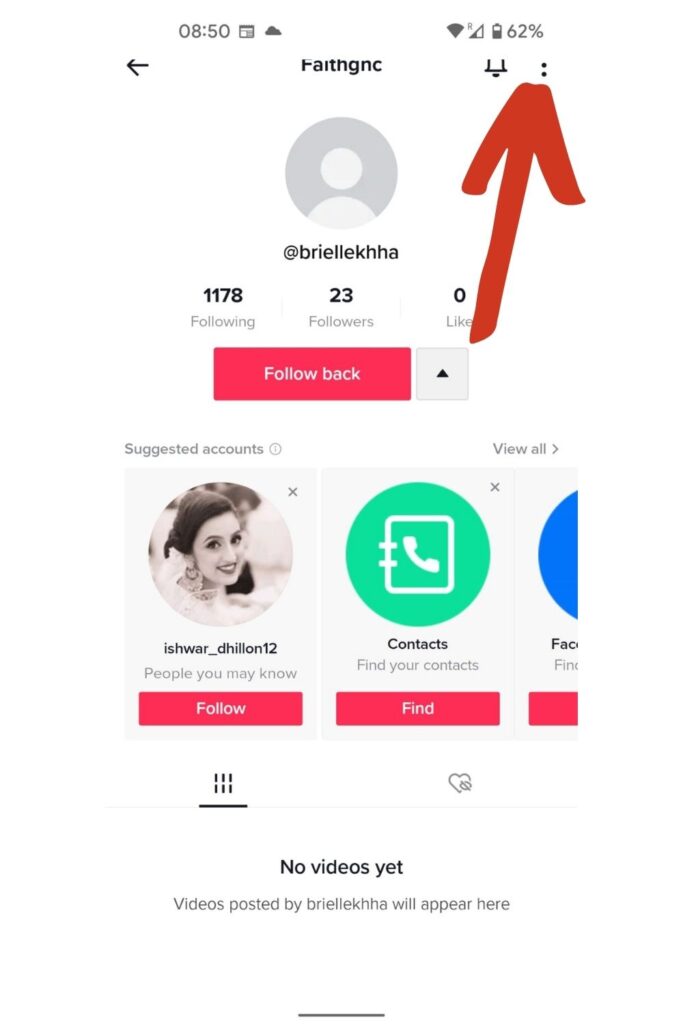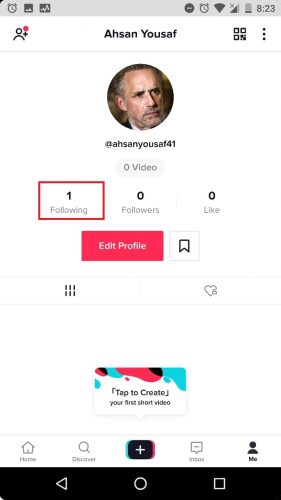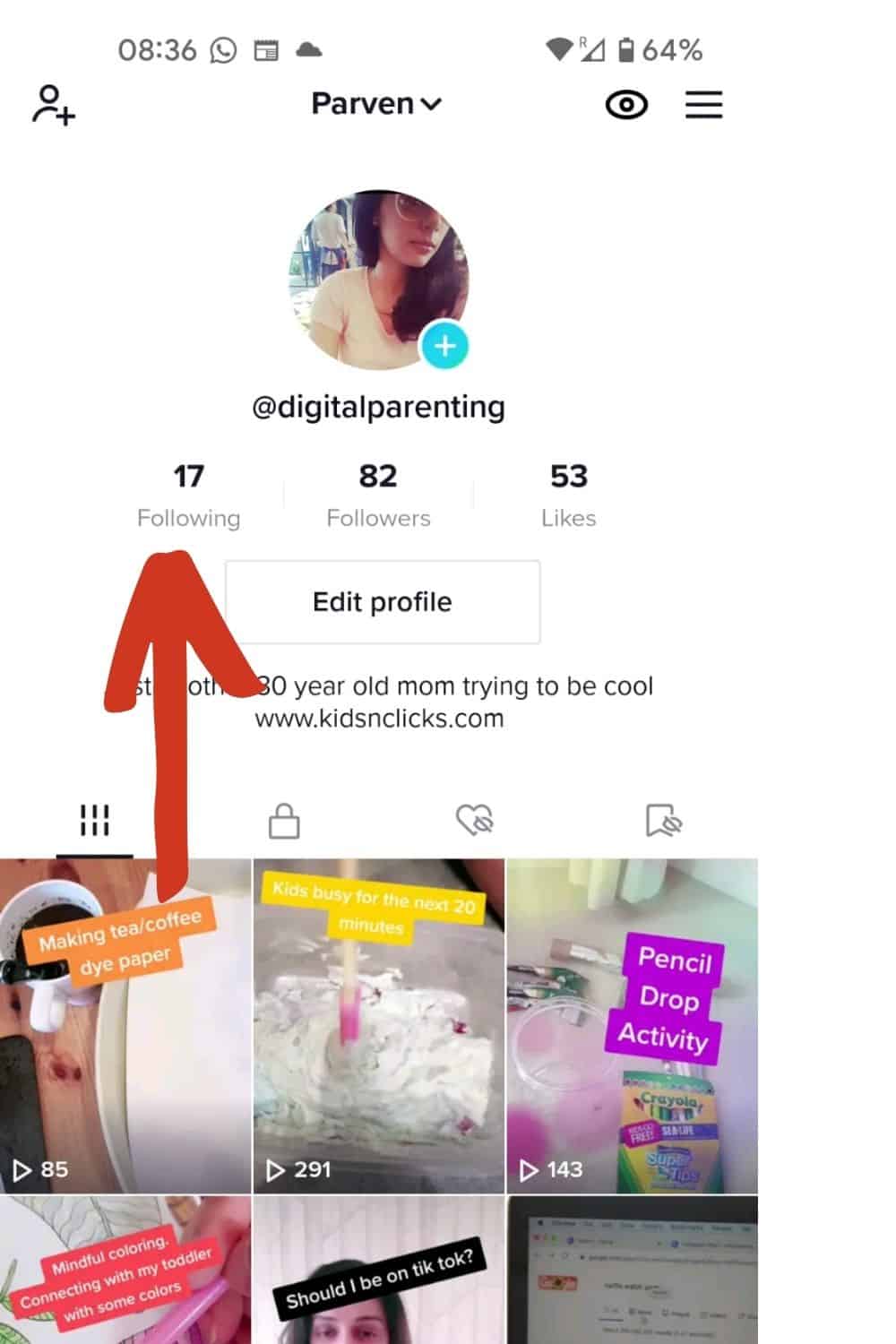Why You Might Want to Block a Follower on TikTok
TikTok has become an essential platform for self-expression and creativity, with millions of users sharing their content every day. However, with the rise of social media, online harassment and unwanted attention have become increasingly common. If you’re experiencing any form of harassment, spam, or unwanted attention on TikTok, blocking a follower can be an effective way to maintain a positive and safe online experience.
Blocking a follower on TikTok can help prevent unwanted interactions, such as comments, messages, or duets. It can also help you avoid seeing their content in your feed, which can be especially useful if you’re trying to avoid someone who is consistently posting negative or disturbing content. Additionally, blocking a follower can help you protect your mental health and well-being by reducing your exposure to online stress and anxiety.
In some cases, blocking a follower on TikTok may be necessary to prevent online stalking or harassment. If someone is consistently sending you unwanted messages or comments, or if you feel like you’re being targeted by a specific user, blocking them can be an effective way to protect yourself. TikTok takes online harassment seriously, and blocking a follower is one way to take control of your online experience and ensure your safety.
It’s worth noting that blocking a follower on TikTok is a reversible action. If you block someone by mistake, or if you change your mind and want to unblock them, you can do so easily. However, it’s essential to remember that blocking a follower is a serious action, and it should only be used in cases where it’s necessary to protect yourself or your online experience.
Overall, blocking a follower on TikTok can be an effective way to maintain a positive and safe online experience. By understanding the reasons why you might want to block a follower, you can take control of your online interactions and ensure that your TikTok experience is enjoyable and stress-free.
How to Block a Follower on TikTok: A Step-by-Step Guide
Blocking a follower on TikTok is a straightforward process that can be completed in a few steps. To block a follower on TikTok, follow these steps:
Step 1: Open the TikTok app and navigate to the profile of the user you want to block. You can do this by searching for their username or by finding them in your followers list.
Step 2: Tap the three dots on the top-right corner of the user’s profile page. This will open a menu with several options.
Step 3: Tap “Block” from the menu. You will be asked to confirm that you want to block the user.
Step 4: Tap “Block” again to confirm. The user will now be blocked from interacting with your account.
Alternatively, you can also block a follower from your followers list. To do this, follow these steps:
Step 1: Open the TikTok app and navigate to your followers list.
Step 2: Find the user you want to block and swipe left on their username.
Step 3: Tap “Block” from the menu. You will be asked to confirm that you want to block the user.
Step 4: Tap “Block” again to confirm. The user will now be blocked from interacting with your account.
It’s worth noting that blocking a follower on TikTok will not notify them that they have been blocked. They will simply no longer be able to interact with your account or view your content.
By following these steps, you can easily block a follower on TikTok and maintain a positive and safe online experience.
Understanding TikTok’s Blocking Features
TikTok offers several blocking features that allow users to manage their online interactions and maintain a positive experience on the app. Understanding these features is essential to effectively managing unwanted followers and maintaining a safe online environment.
Blocking a User: Blocking a user on TikTok prevents them from interacting with your account, including commenting, liking, or sending messages. When you block a user, they will not be notified, and they will not be able to see your content or interact with your account in any way.
Restricting Interactions: Restricting interactions on TikTok allows you to limit a user’s ability to interact with your account without blocking them entirely. When you restrict a user’s interactions, they will not be able to comment on your videos or send you messages, but they will still be able to view your content.
Reporting for Harassment: If you are experiencing harassment or bullying on TikTok, you can report the user to TikTok’s moderators. Reporting a user for harassment will trigger an investigation, and if the user is found to be in violation of TikTok’s community guidelines, they may be suspended or banned from the app.
It’s essential to understand the differences between these blocking features and when to use each one. Blocking a user is a more severe action that should be reserved for situations where you feel threatened or harassed. Restricting interactions is a more nuanced approach that can help you manage unwanted interactions without completely blocking a user. Reporting a user for harassment is the most severe action and should only be used in situations where you are experiencing serious harassment or bullying.
By understanding TikTok’s blocking features, you can effectively manage your online interactions and maintain a positive experience on the app. Whether you need to block a user, restrict their interactions, or report them for harassment, TikTok’s blocking features provide you with the tools you need to take control of your online experience.
What Happens When You Block a Follower on TikTok
When you block a follower on TikTok, it prevents them from interacting with your account in several ways. The blocked user will no longer be able to:
Comment on your videos: The blocked user will not be able to leave comments on your videos, which can help reduce unwanted interactions and maintain a positive online environment.
Send you messages: The blocked user will not be able to send you direct messages, which can help prevent harassment or unwanted attention.
View your content: The blocked user will not be able to view your videos or profile, which can help prevent them from accessing your content.
Interact with your account: The blocked user will not be able to interact with your account in any way, including liking or reacting to your videos.
Blocking a follower on TikTok also affects your own experience on the app. When you block a user, you will no longer see their comments or messages, and you will not be notified when they try to interact with your account.
Additionally, blocking a follower on TikTok can also impact your account’s visibility and engagement. If you block a user who frequently interacts with your account, you may see a decrease in engagement and visibility.
However, blocking a follower on TikTok can also have positive effects on your account. By blocking unwanted followers, you can maintain a positive and safe online environment, which can help increase engagement and visibility from users who are genuinely interested in your content.
Overall, blocking a follower on TikTok is a powerful tool for managing unwanted interactions and maintaining a positive online experience. By understanding what happens when you block a follower, you can use this feature effectively to take control of your TikTok account.
How to Know if Someone Has Blocked You on TikTok
If you’re wondering whether someone has blocked you on TikTok, there are several signs you can look out for. Here are some common indicators that someone may have blocked you:
Unable to view their profile: If you try to visit someone’s profile and you’re unable to see their content, it may be a sign that they’ve blocked you.
Unable to send them messages: If you try to send someone a message and you’re unable to do so, it could be a sign that they’ve blocked you.
No notifications: If you’re used to receiving notifications from someone, but you’re no longer receiving them, it could be a sign that they’ve blocked you.
Unable to comment on their videos: If you try to comment on someone’s video and you’re unable to do so, it may be a sign that they’ve blocked you.
It’s worth noting that these signs don’t necessarily mean that someone has blocked you. There could be other reasons why you’re unable to view their profile or send them messages, such as a technical issue or a problem with your account.
If you’re concerned that someone has blocked you on TikTok, you can try reaching out to them through other means, such as email or another social media platform. However, if you’re unable to contact them, it’s best to respect their decision and move on.
Blocking someone on TikTok is a personal decision, and it’s not always possible to know why someone has chosen to block you. However, by being aware of the signs that someone may have blocked you, you can take steps to protect your own online experience and maintain a positive presence on the app.
Blocking Followers vs. Restricting Accounts: What’s the Difference?
When it comes to managing unwanted followers on TikTok, there are two main options: blocking followers and restricting accounts. While both options can help you maintain a positive and safe online experience, they have different effects and uses.
Blocking a follower on TikTok completely prevents them from interacting with your account, including commenting, liking, or sending messages. When you block a follower, they will not be notified, and they will not be able to see your content or interact with your account in any way.
Restricting an account on TikTok, on the other hand, limits the user’s ability to interact with your account, but does not completely block them. When you restrict an account, the user will still be able to see your content, but they will not be able to comment or send messages.
The main difference between blocking and restricting is the level of interaction allowed. Blocking completely prevents interaction, while restricting limits interaction but still allows the user to view your content.
When to use each option depends on the situation. If you’re experiencing harassment or spam from a follower, blocking them may be the best option. However, if you simply want to limit a user’s ability to interact with your account, restricting may be a better choice.
It’s also worth noting that restricting an account can be a more nuanced approach than blocking. By restricting an account, you can still allow the user to view your content, but limit their ability to interact with you. This can be useful if you want to maintain a relationship with the user, but still need to set boundaries.
Ultimately, the decision to block or restrict an account on TikTok depends on your individual needs and circumstances. By understanding the differences between these two options, you can make an informed decision and take control of your online experience.
Best Practices for Managing Your TikTok Followers
Managing your TikTok followers effectively is crucial to maintaining a positive and safe online experience. Here are some best practices to help you manage your followers:
Engage with your audience: Respond to comments and messages from your followers in a timely and respectful manner. This will help build trust and loyalty with your audience.
Set boundaries: Establish clear boundaries with your followers, such as not engaging with spam or harassment. This will help maintain a positive and safe online environment.
Use TikTok’s blocking features: Use TikTok’s blocking features to block unwanted followers or restrict their interactions with your account.
Monitor your followers: Regularly monitor your followers to ensure that they are not engaging in spam or harassment.
Be authentic: Be authentic and genuine in your interactions with your followers. This will help build trust and loyalty with your audience.
Provide value: Provide value to your followers by sharing high-quality content and engaging with them in a meaningful way.
Be consistent: Be consistent in your interactions with your followers and maintain a consistent tone and style.
By following these best practices, you can effectively manage your TikTok followers and maintain a positive and safe online experience.
Additionally, it’s essential to remember that managing your followers is an ongoing process. Regularly review your followers and adjust your strategy as needed to ensure that you’re maintaining a positive and safe online environment.
By taking control of your TikTok followers, you can build a loyal and engaged community that will help you achieve your goals on the platform.
Conclusion: Taking Control of Your TikTok Experience
Managing your TikTok followers is an essential part of maintaining a positive and safe online experience. By understanding how to block unwanted followers and use TikTok’s blocking features effectively, you can take control of your online presence and ensure that your experience on the app is enjoyable and stress-free.
Remember, blocking a follower on TikTok is a powerful tool that can help you maintain a positive and safe online environment. By using this feature effectively, you can prevent harassment, spam, and unwanted attention, and ensure that your experience on the app is enjoyable and stress-free.
In addition to blocking unwanted followers, it’s also essential to engage with your audience, respond to comments, and maintain a positive online presence. By following these best practices, you can build a loyal and engaged community that will help you achieve your goals on the platform.
By taking control of your TikTok followers and using the app’s blocking features effectively, you can ensure that your experience on the app is positive, safe, and enjoyable. So, don’t wait any longer – take control of your TikTok experience today and start building a loyal and engaged community that will help you achieve your goals on the platform.
By following the tips and advice outlined in this article, you can take control of your TikTok followers and ensure that your experience on the app is positive, safe, and enjoyable. Remember, managing your followers is an ongoing process, so be sure to regularly review your followers and adjust your strategy as needed to ensure that you’re maintaining a positive and safe online environment.




